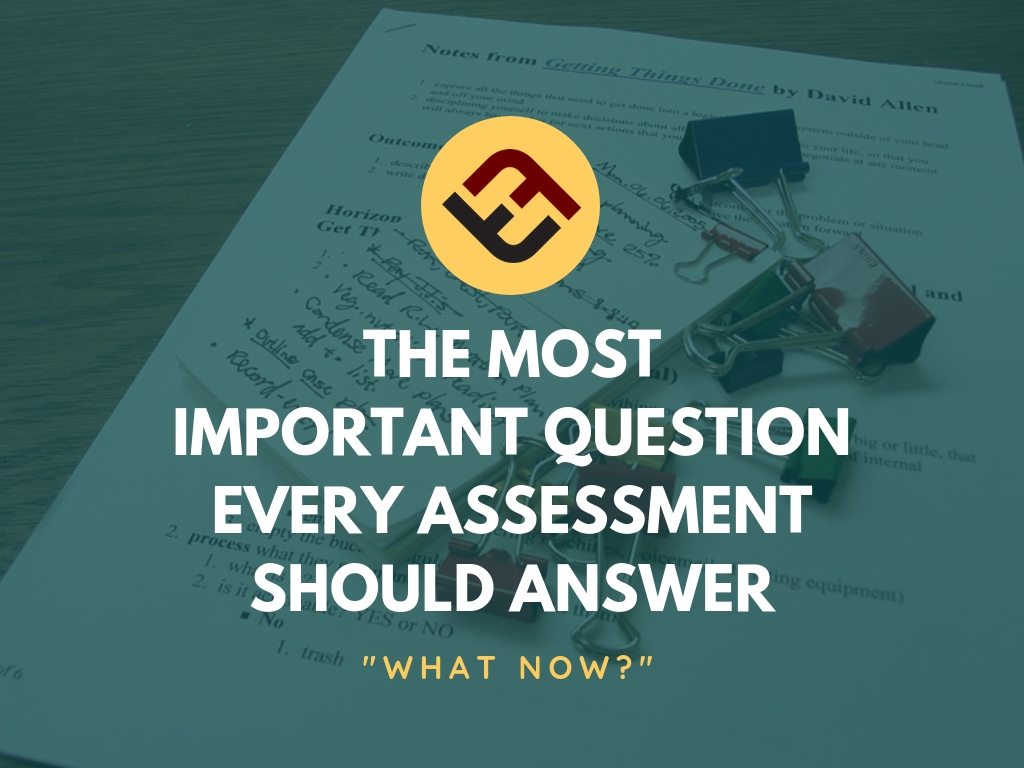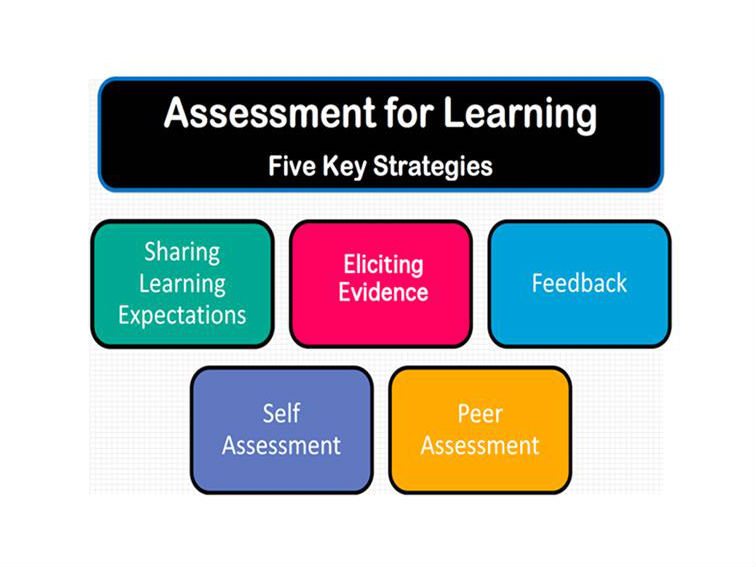
Every Assessment Should Answer This Important Question
The difference between assessment of learning and assessment for learning is a crucial one, in many ways indicative of an important shift in education.
Traditionally, tests have told teachers and parents how a student ‘does,’ then offers a very accessible point of data (usually percentage correct and subsequent letter grade) that is reported to parents as a performance indicator. Class data can be gathered to imply instructional effectiveness, and the data from multiple classrooms can be combined to suggest the performance of an entire school, but a core message here is one of measurement and finality: this is how you did. This was the bar, and you either cleared it or you didn’t.
And it’s all past tense.
5 Strategies For Assessment For Learning

First, a word about assessment strategies. comenuusaassessment.com created the above graphic that shares 5 strategies for assessment for learning:
1. Sharing Learning Expectations
2. Eliciting Evidence
3. Feedback
4. Self-Assessment
5. Peer Assessment
See also The Most Important Things Students Learn At School
This approach to assessment outlines the systematic approach–ways of measuring understanding, including self-assessment and peer-assessment, feedback for learning, and clear communication of performance criteria. These strategies hint at the organic, dynamic, and iterative feel any modern system of assessment should realize.
What Every Assessment For Learning Should Tell You
Of course, it’s never that simple.
During assessment of learning, a test (of some kind) is given to communicate student understanding. Years of research have let us know that consistently hoping for ‘understanding data’ from your average classroom assessment is hopelessly problematic, not to mention reductionist, sterile, and institutionally-centered.
Still, it happens.
But a simple shift to assessment for learning can quickly modernize the instruction in any classroom. Here, the change goes from exams that are evaluative to those that are reflective of both process and understanding.
See How To Google Search By Date
The benefit of assessments for learning isn’t merely a more clear picture of understanding; Used properly, it can also inform the rest of the learning process, from curriculum mapping (what do we learn when?) to instruction (how will it be learned?) to assessment design (how should future learning ideally be measured?)
While the role of testing in instructional design isn’t simple, it really might be. If the goal of any assessment is to provide data to refine planned instruction, then the primary function of any assessment, whether an authentic, challenge-based learning performance or a standardized test, should be to answer the following question for any teacher:
“What now?”
If the data doesn’t provide a clear path forward for both students and teachers, it likely obscures more than it clarifies.
Stiggins, R.J. (1999). Evaluating classroom assessment training in teacher education. Educational Measurement: Issues and Practice. 18 (1), 23-27.; image attribution flickr user teo
